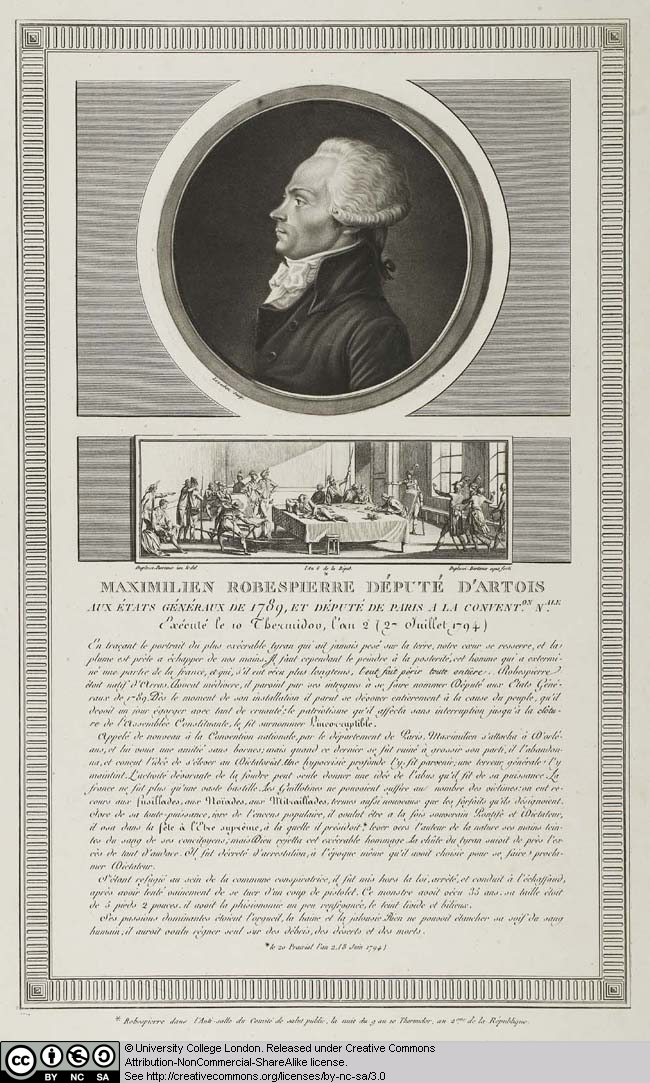23 Le Vachez's Robespierre

Charles François
Gabriel Le Vachez (1760 – 1820) and Jean Duplessi-Bertaux (1747 – 1819)
Maximilien Robespierre
Député d’Artois ; Robespierre dans l’Anti-salle du Comité de salut public, le
nuit du 9 au 10 Thermidor, an 2ème de la République (Robespierre in the
anti-chamber of the committee of public safety, the night of the 9th to 10th Thermidor,
the second year of the Republic) , 1802
Etching, engraving and
aquatint
Published in the
series Tableaux historiques de la Révolution française, 1791 – 1817, ( first
included in the edition of 1802 )
‘In tracing the portrait of the most terrible tyrant who has
ever walked the earth, our heart contracts and the pen is ready to drop from
our hands. One must nevertheless paint for posterity this man who exterminated
a part of
In the vignette accompanying the discourse, Duplessi-Bertaux
has depicted the (appropriately) grisly last hours in the life of the
Revolution’s most notorious protagonist who, in the end, could not escape the
justice of Madame Guillotine. He is shown prostrate and powerless, lying where
he fell after his failed suicide attempt, during which he succeeded only in
removing his own jaw with a pistol shot. The terrible state of Robespierre, not
visible in the tiny image, is succinctly conveyed by the reactions of the men
who have just entered the room and who throw their hands up in alarm at the
sight of him. Entering from the left are men carrying a stretcher, presumably
to convey him to his trial and, following that, his execution.
Le Vachez’ portrait of Robespierre was modelled on the one
included in the series, Portraits des personnages célèbres de la Révolution, an
exhaustive compilation of 200 subjects edited by François Bonneville. [1] First printed in 1793, Bonneville’s series was later
extended and republished first in 1796 and then again in 1802.
[1] Claudette Hould, La Révolution
par la Gravure: les Tableaux historiques de la Révolution française, un
entreprise éditoriale d’information et sa diffusion en
Licensed under the Creative Commons Attribution Non-commercial Share Alike 3.0 License
This resource has been released as an open educational resource (OER) on a Creative Commons 'Attribution Non-commercial Share Alike' license. This means that once downloaded, content can be modified and improved to complement a particular course. This requires, however, that improvements are recycled back into the OER community. All content present at the time of download must be accordingly credited and, in turn, novel content must be appropriately licensed.